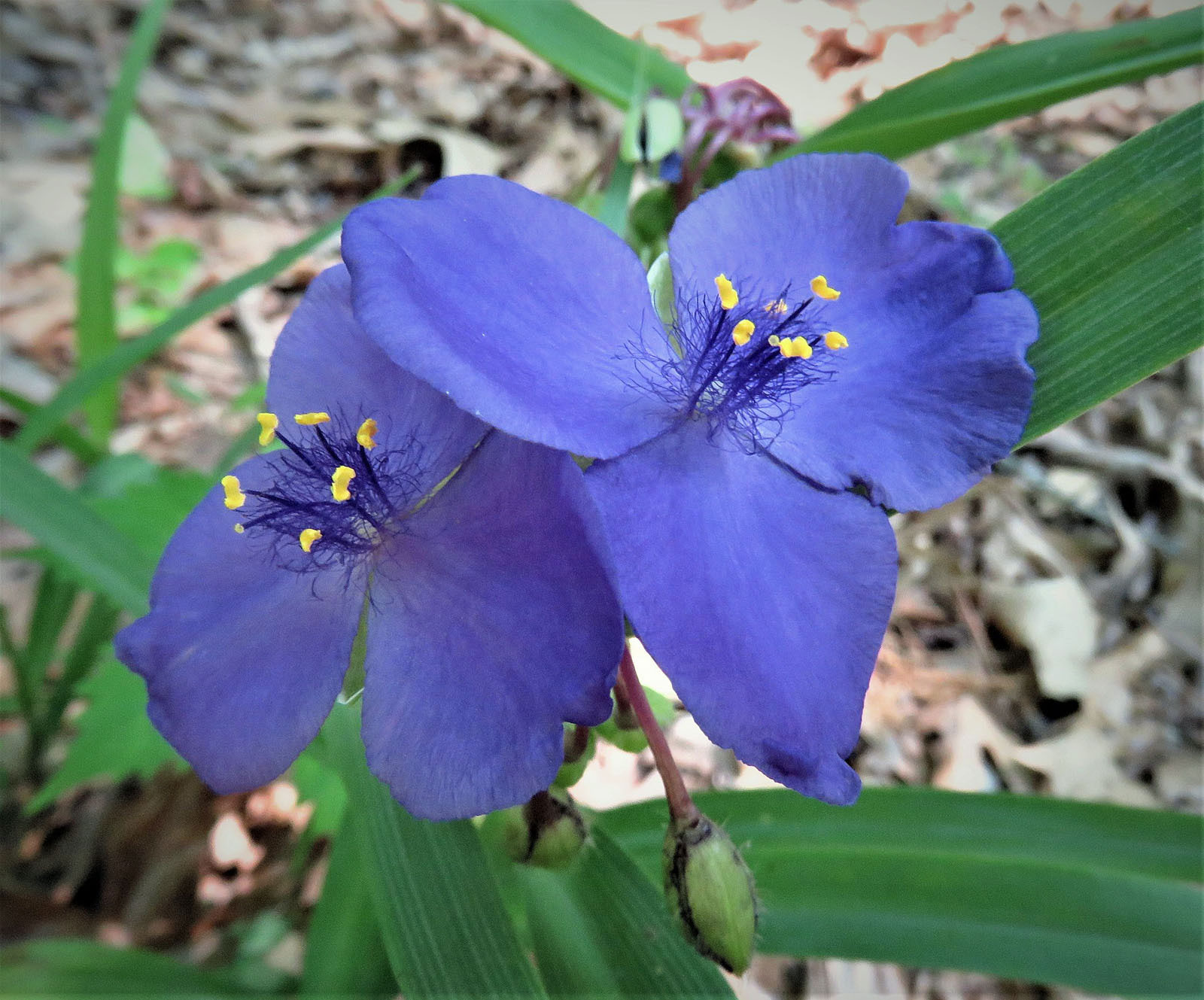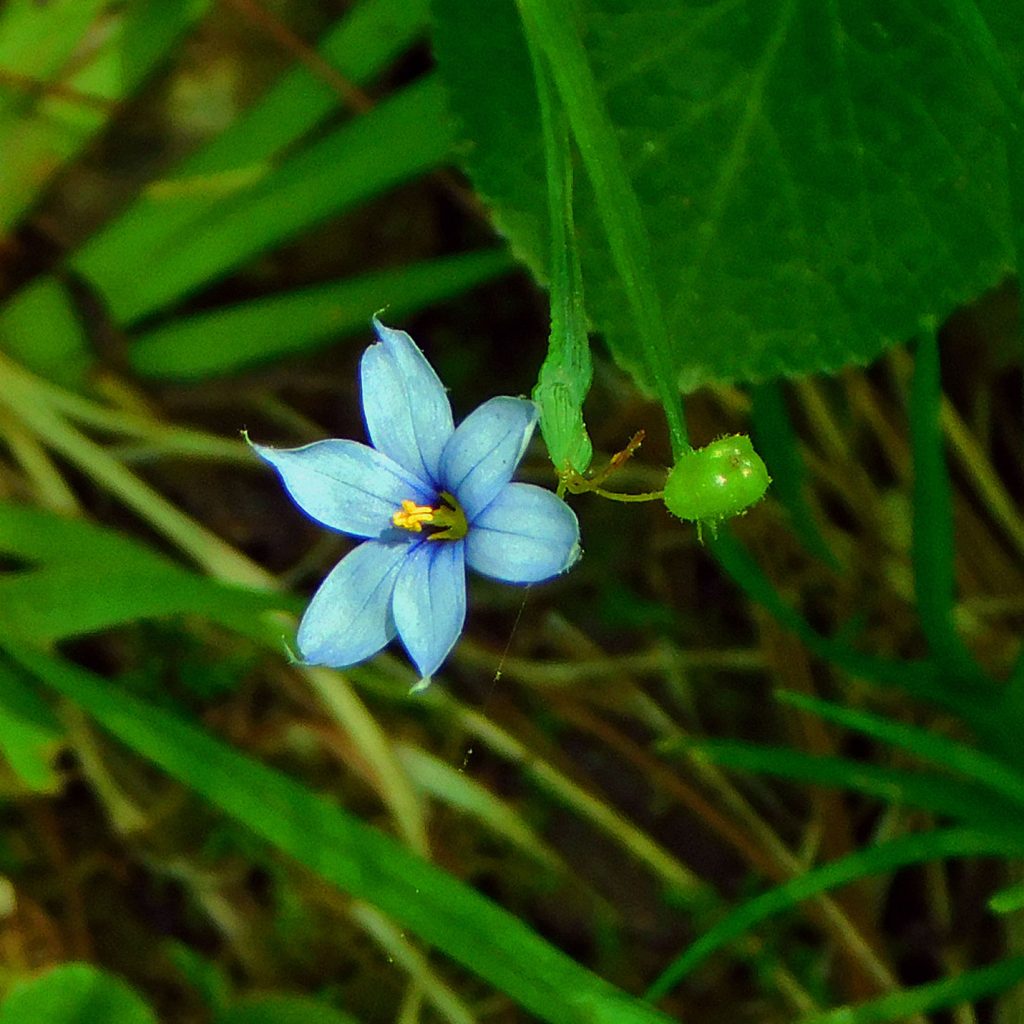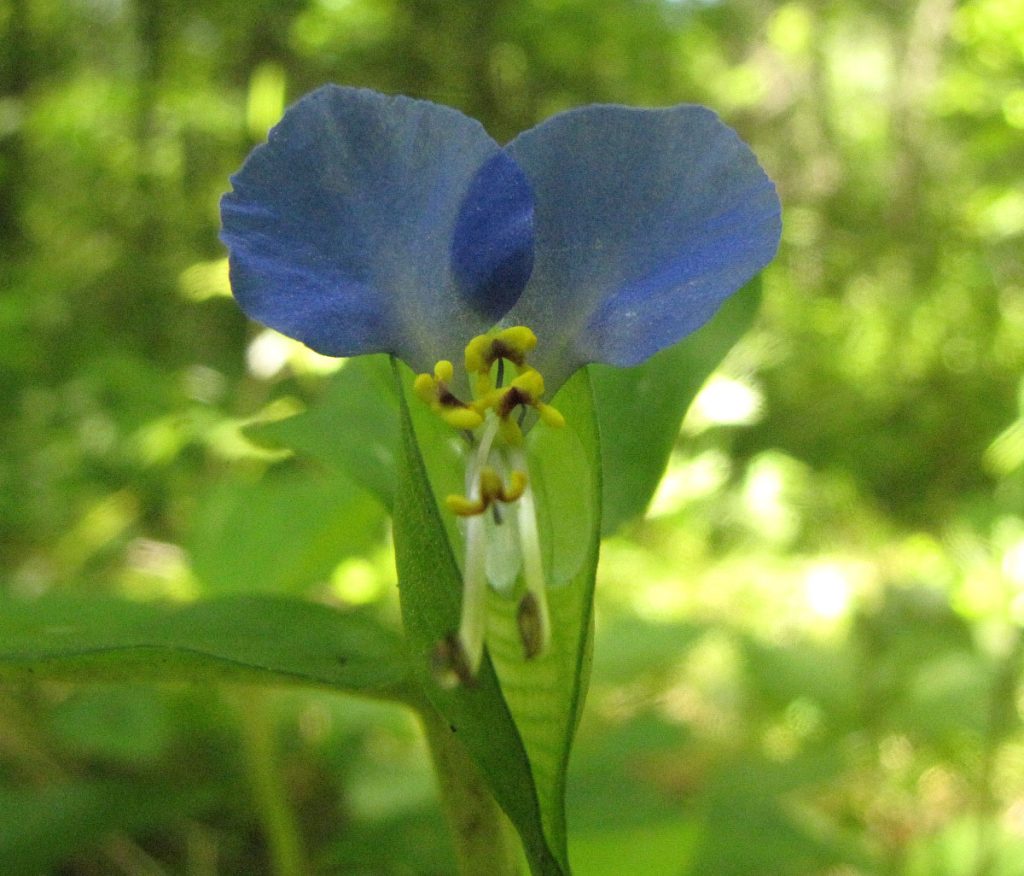
Story and images by Tom Harrington

If you have an interest in wildflowers, perhaps you have noticed how many flowers are blue in color. The flowers we’ll examine today have small blue blooms.
To start, did you know that blue-eyed grass is not a grass? It is related to the iris species. The plant is usually no taller than eight inches, and its blooming time is normally in May. You might look in your yard to see if you have this flower growing there. I have found it in my yard, but it can easily be missed because of being short and mixed in with the grass. One point of interest is that the flower’s botanical name is Sisyrinchium, which can be translated into “hog snout.” This is attributed to the belief that pigs like to root up the plant.
Next is spiderwort, which has an attractive bloom, and information about the plant is among the most interesting that I have encountered. Its blooms have three blue petals that are equal in size. What’s most interesting to me is that, unlike most blooms that shrivel up and fall off, the spiderwort bloom has enzymes that dissolve it into a runny blob after fertilization.

Even more interesting is the fact that scientists have discovered that the plant can detect lower levels of radiation than ordinary electronic equipment. Because of its sensitivity to pollution (e.g., pesticides, carbon monoxide) and radiation, the plant is grown commercially at certain sites as a monitoring tool. Scientists handling the plant must be careful because the sap contains raphides (irritating needle-shaped crystals of calcium oxalate).
Asiatic dayflower is similar in appearance to spiderwort. However, its bloom differs in that it has two blue petals and a smaller white petal instead of three equal-sized blue petals. The plant was imported from Asia.

Some call the flower “mouse flower” because of the appearance of the two blue petals. Other reports say that the plant received its scientific name—Commelina communis—after three Dutch brothers who were botanists with the last name Commelin. Two of the brothers excelled and produced publications; however, the third brother died and had no publications. Thus, the two larger blue petals represent the two more successful brothers, and the small white petal of the bloom represents the less successful brother.
As you and I get out onto Smoky Mountain trails to enjoy wildflowers, might we remember the words of the noted author and botanist Augustine Gattinger, who said the following about wildflowers: “For truth, my honored Tennessee friends, go and see, and learn to appreciate and to preserve such great ornaments of your native land.” Let’s do it!
Tom Harrington is an Army veteran and retired insurance agent who has spent his life in Knox County, TN. He is an avid hiker and has volunteered for GSMNP since 2000.
Subscribe to get the latest posts sent to your email.
The Great Smokies Welcome Center is located on U.S. 321 in Townsend, TN, 2 miles from the west entrance to Great Smoky Mountains National Park. Visitors can get information about things to see and do in and around the national park and shop from a wide selection of books, gifts, and other Smokies merchandise. Daily, weekly, and annual parking tags for the national park are also available.